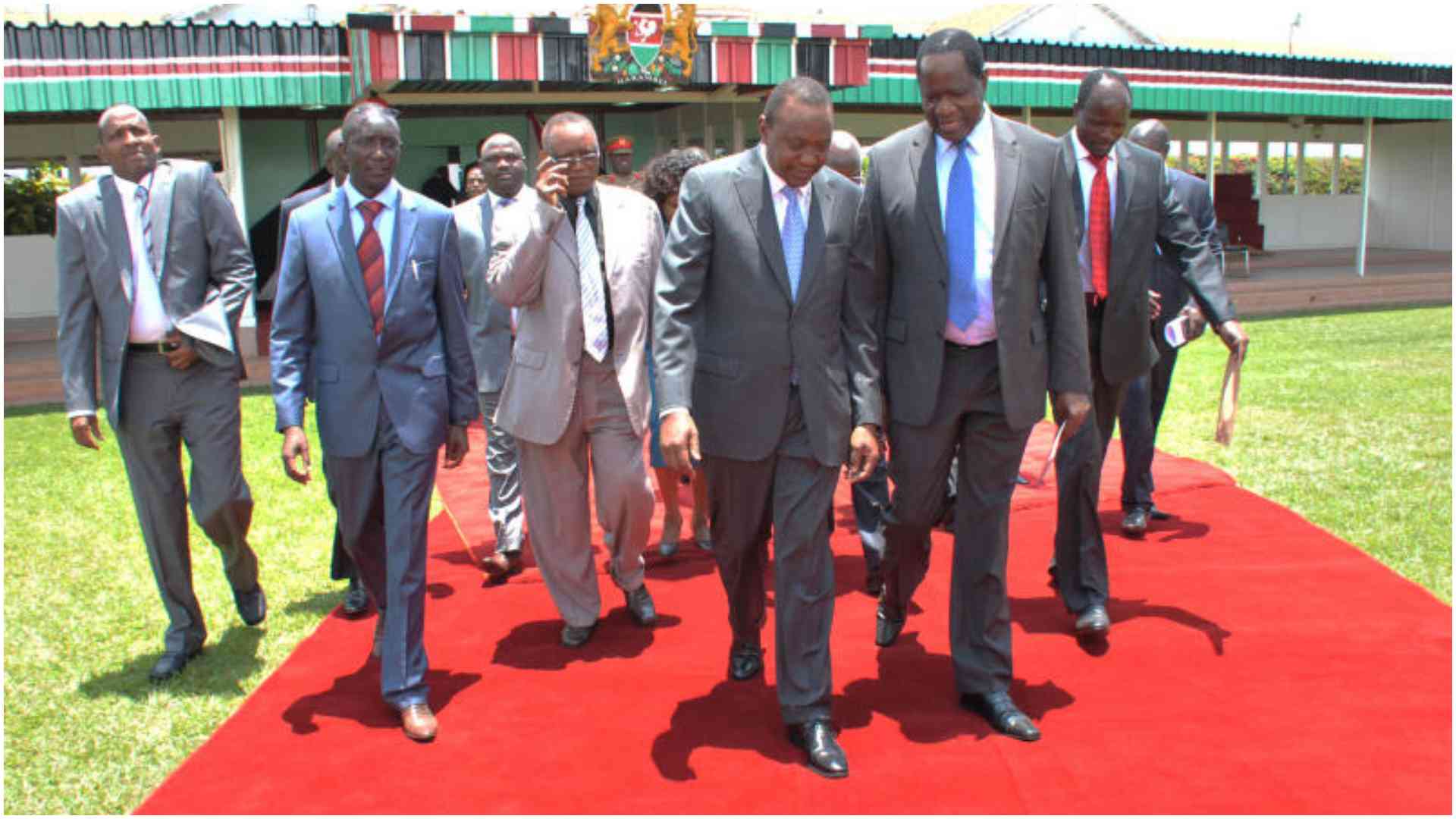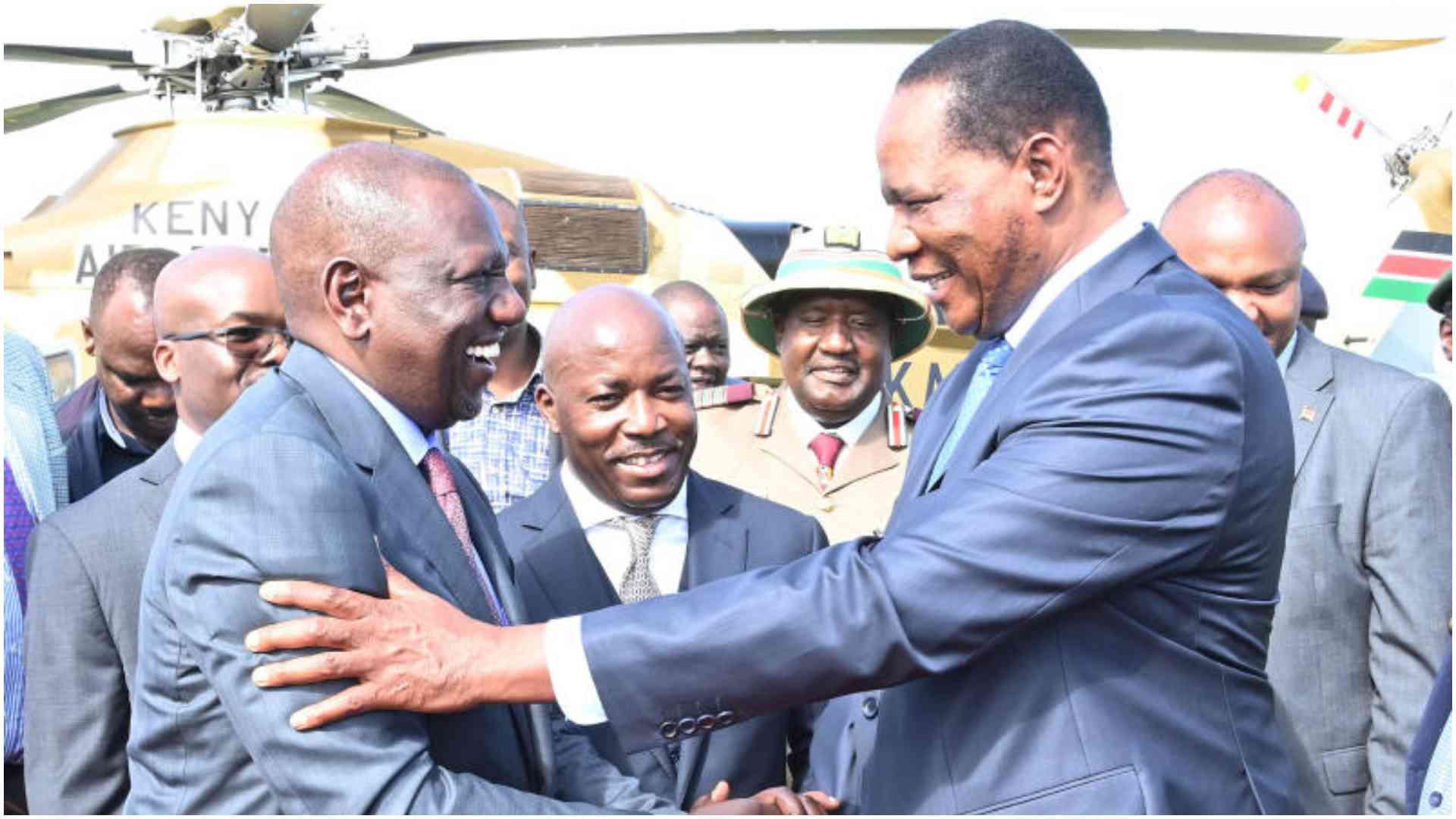On September 7, 2025, the curtain fell on one of Luo Nyanza’s, and indeed Kenya’s, most decorated and towering political figure, former Cabinet Minister and Rongo MP Dalmas Otieno Anyango.
His death at the age of 80 revived memories of a name once synonymous with controversial political stances, audacious yet calculated moves, and daring decisions that defined his decades-long career.
Dalmas often described his political journey as that of “an insider, then outsider, then insider again,” reflecting his constant oscillation between government and opposition power corridors depending on the political circumstances of the day.
Dalmas was born on April 19, 1945, in Kangeso village, Rongo Kamagambo, in Migori County. He schooled at Makerere University in Uganda, where he studied Economics and later specialised in Insurance before joining politics in 1988 when he was elected as Rongo MP under the then-ruling Kenya African National Union (KANU) ticket.
Dalmas, who was popularly known among his supporters as “Wuod bade boyo ja Kangeso” (the son of a tall man from Kangeso) due to his tall stature, was, however, a controversial politician who led a life defined by bold gambles and an unyielding independent streak.
His acts of defiance culminated in his audacious, but ill-fated attempt to dethrone ODM leader and former Prime Minister Raila Odinga as Luo Nyanza’s political kingpin.
This was through the “Kalausi Movement” in 2014, a year after being voted back to Parliament on an ODM ticket while Raila lost his presidential bid to former President Uhuru Kenyatta in the General Election.

Kalausi gamble
Kalausi, which loosely translates to “whirlwind” in Luo, was a political movement formed to challenge the ODM establishment led by Raila Odinga and his long-standing allies.
To Dalmas, it was a bold mission to liberate the Luo community from what he termed “Odingaism”—a monopolistic grip on regional politics. The movement sought to create a rift between Luos in South Nyanza (Migori and Homa Bay) and their Central Nyanza counterparts (Kisumu and Siaya), where Raila hails from.
This move sharply polarised Luo politics, even splitting the Luo Council of Elders. The then-chairman, Ker Riaga Ogallo, backed Kalausi figures, such as Nairobi Governor Evans Kidero, while a faction led by the late Opiyo Otondi rallied behind Raila. After Ogallo’s death, Nyandiko Ongadi succeeded him, while the pro-Raila faction later handed leadership to Odungi Randa.
To date, the Council remains divided, though Odungi has enjoyed more legitimacy due to his close ties with Raila’s camp.
Political undercurrents
According to political analyst Joshua Nyamori, Dalmas’ attempt to dethrone Raila as the Luo Nyanza political kingpin through his Kalausi movement was partly due to his decades-long grudge against the Odingas, as well as an ill-informed perception that Raila had lost his shine following his losses in presidential elections.
“Dalmas, from the 1980s when he joined politics, was always independent of the Odingas. He only came to work with them in 2007 when he wanted to win back his Rongo parliamentary seat, and the ODM wave then was too strong, so he joined ODM, but not wholeheartedly,” Nyamori, who is also a High Court Advocate, told The Nairobian in a phone interview.
According to Nyamori, the veteran politician leveraged the existing dissatisfaction against ODM by a section of the Luo Nyanza political class to further his political interests under the Kalausi movement, where he sought to rally ODM dissidents, as well as party members with conflicting views behind him, hoping to establish a political movement to reckon with, at least in the region.
“ODM has been a dominant party and those who do not align with it easily lose favour in the public eye, but would want to craft alternative paths. So as any politician, Dalmas must have hoped to rally such people with alternative viewpoints behind him under a new political formation like Kalausi,” observed Nyamori.
Kisumu County Assembly Majority Whip Seth Ochieng’ Kanga (alias Adui Nyang’) who was an ODM youth winger at the time, told The Nairobian said ODM crushed Kalausi with ease, leveraging deep-rooted structures and Raila’s unmatched regional popularity.
Kisumu County Assembly Majority Whip Seth Ochieng’ Kanga (alias Adui Nyang’) who was an ODM youth winger at the time, told The Nairobian that ODM crushed Kalausi with ease, leveraging deep-rooted structures and Raila’s unmatched regional popularity.

“ODM has rooted structures that go deep into the grassroots. We were able to leverage the structures and the aura that Raila has always used to mobilise, and that’s how we encountered the Kalausi movement. All the leaders who supported or associated with that movement were sent to political oblivion, and most of them, including Dalmas Otieno himself, have never won any political seat since that 2014 drama,” said Kanga.
Some of Kalausi movement’s most notable political figures at the time included Dr Kidero, who in 2022 lost to Governor Gladys Wanga in the Homa Bay gubernatorial election, former MPs Ken Obura (Kisumu Central), Martin Ogindo (Rangwe), Silvernus Kosele (Kabondo Kasipul), and Agustin Neto Oyugi (Ndhiwa) among others.
Kanga said wrestling political power from Raila, especially in his Luo Nyanza backyard, remains a political suicide mission.
“As a community, we believe that Raila Odinga earned his place at the helm of Luo community political leadership as well as Kenya. He suffered and sacrificed a lot in order to get where he is. You can’t just pop up from nowhere and expect people to rally behind you,” Kanga stated.
His sentiments were echoed by the former President of the East Africa Law Society, James Mwamu, who believes that the Luo community still has a lot of attachment to Raila and would not easily replace him. “Luo Nyanza is, of course, appreciating the fact that Raila may have just a few years in politics, but they still have a lot of attachment to him. He is still going to have a lot of say in the 2027 elections,” Mwamu said.
Young politicians keen on taking over from Raila, he said, should not allow themselves to be deluded by their purported popularity, saying that they should focus on building their careers on strong ideologies that will make them outstanding.
“Let the young politicians not think that because you have been received warmly in a funeral in Nyanza, that means you are now the political kingpin,” he said.
But Dalmas’ attempt to challenge Raila Odinga’s political dominance was not a one-off gamble—it was a long, calculated struggle dating back to his days as a KANU insider and Luo Nyanza political heavyweight.
Party defections
In 1994, he convinced several South Nyanza MPs to ditch Ford Kenya—which had taken them to Parliament in 1992—and rejoin the ruling KANU. Among them was Ndhiwa MP Tom Obondo, triggering a by-election that quickly escalated into a fierce political showdown.
According to veteran journalist John Oywa, Raila countered by fronting the late Orwa Ojode, then a little-known figure, to defend the Ford Kenya seat. The campaigns turned violent, with rival youth groups clashing in bloody battles.
Oywa, who was then working for The Standard newspaper in the South Nyanza region, vividly recalls a rally at Sikwadhi where Dalmas and armed supporters stormed a Ford Kenya event led by Raila.
“There was a nasty confrontation. Arrows flew, and several people, including a female councilor, were injured,” he recounts.
Dalmas later defended the disruption, claiming Ford Kenya had encroached on KANU’s booked venue.
Beyond politics, Dalmas often clashed with the Odingas on economic issues. Former Muhoroni MP Onyango Midika recalled how he opposed leasing the Kisumu Molasses Plant to Raila’s Spectre International, arguing it should benefit the community, not a political family.
Though ultimately outmaneuvered, Dalmas left his mark. In Rongo, he’s remembered as a leader who championed education as a pathway to uplift his people.


